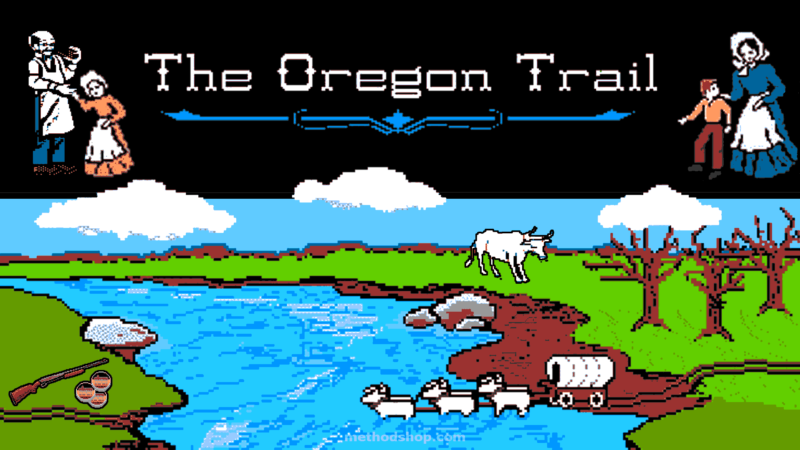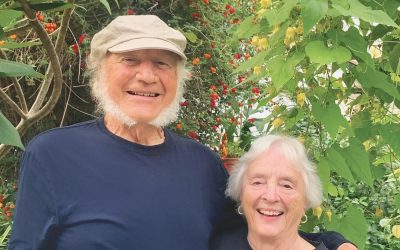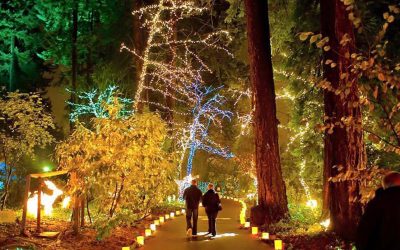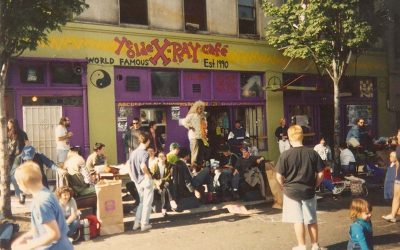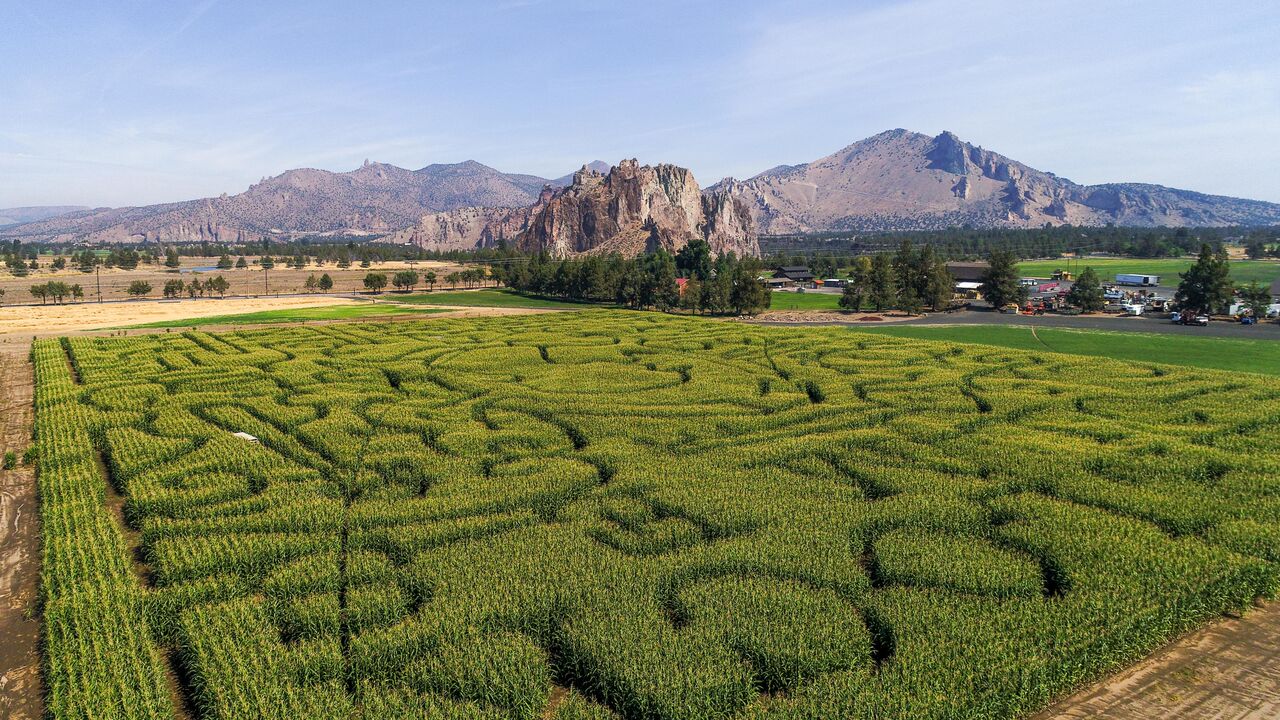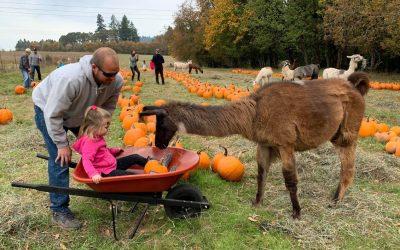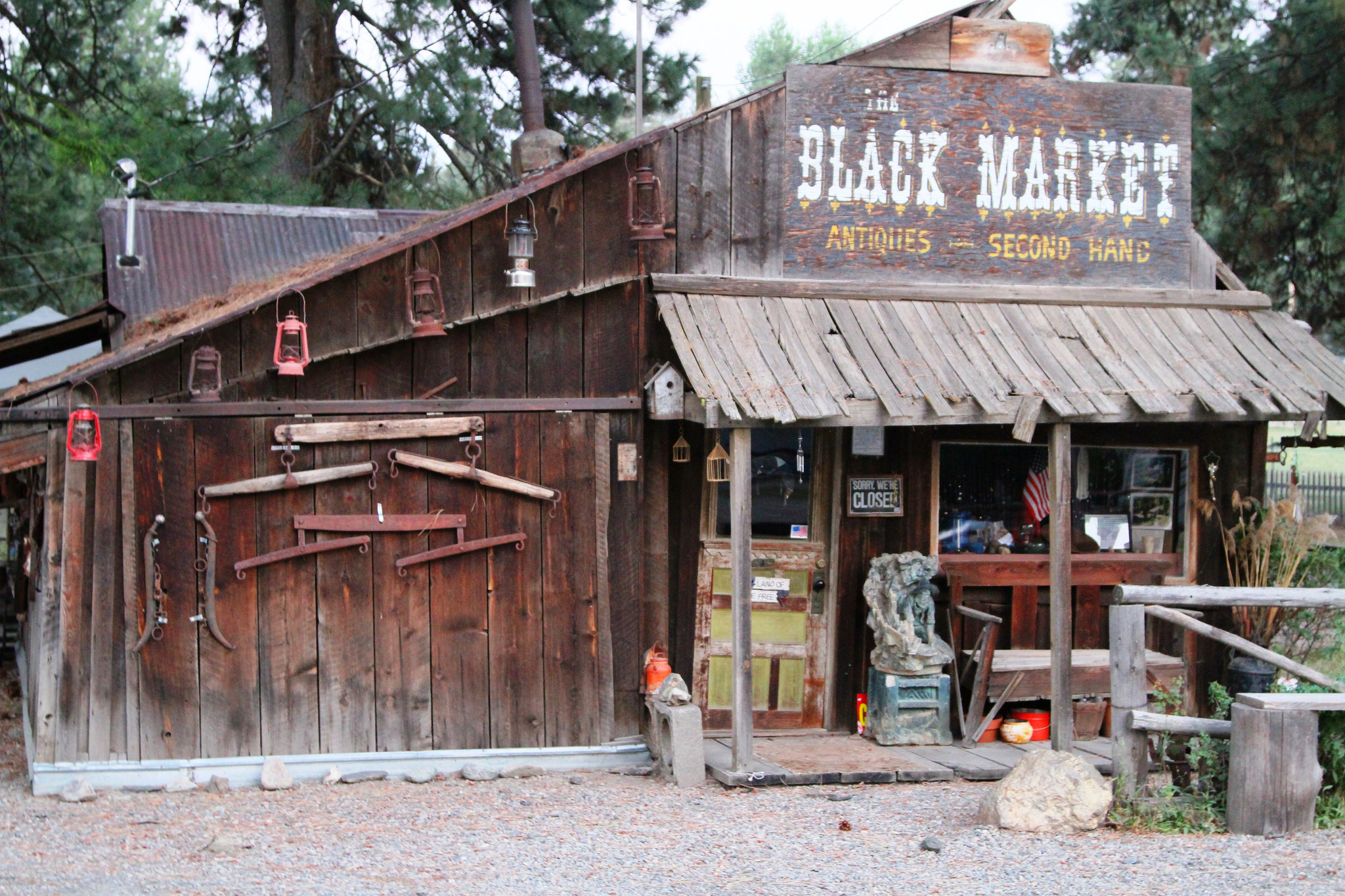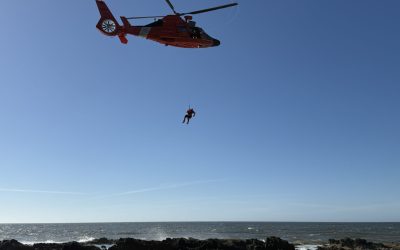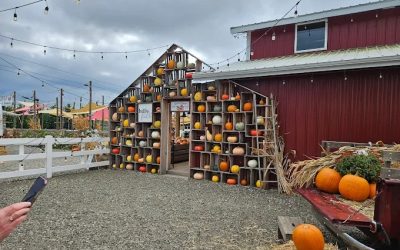I was in fifth grade at my school in Forest Grove, Oregon, and my memories are so fond. Our classroom had a Commodore 64 computer, and I spent hours upon hours playing The Oregon Trail game with its beautiful 8-bit graphics. When I found out that you can actually play an online emulated version of the original video game my adult heart leaped for joy.
A Brief History of The Oregon Trail Game
As early as 1971 there was a very early version of the video game developed by Don Rawitsch, Bill Heinemann, and Paul Dillenberger in Minnesota. Rawitsch was an eighth-grade teacher who wanted a learning aid to teach his class about what life was really like on the trail from Independence, Missouri to The Dalles, Oregon in the 1850s. This was strictly a text-based game with no graphics yet. Think of it as an early, digital Choose Your Own Adventure novel in which you typed out commands instead of clicking them.
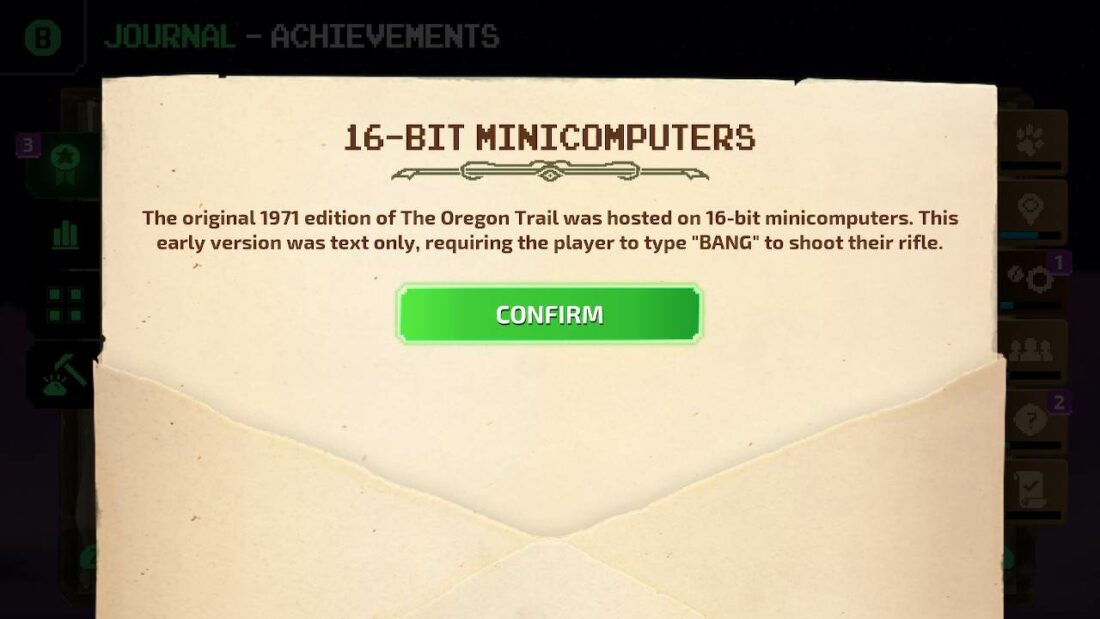
By 1984 the classic game version that I knew and loved as a kid was published, and a year later it was developed for the Apple II computer. There have been subsequent updates all the way up to 2021 (more about that updated version later), but the original is still the most nostalgic for many people. To this day it remains one of the most popular games in the world.
Classic Gameplay, Educational Purposes
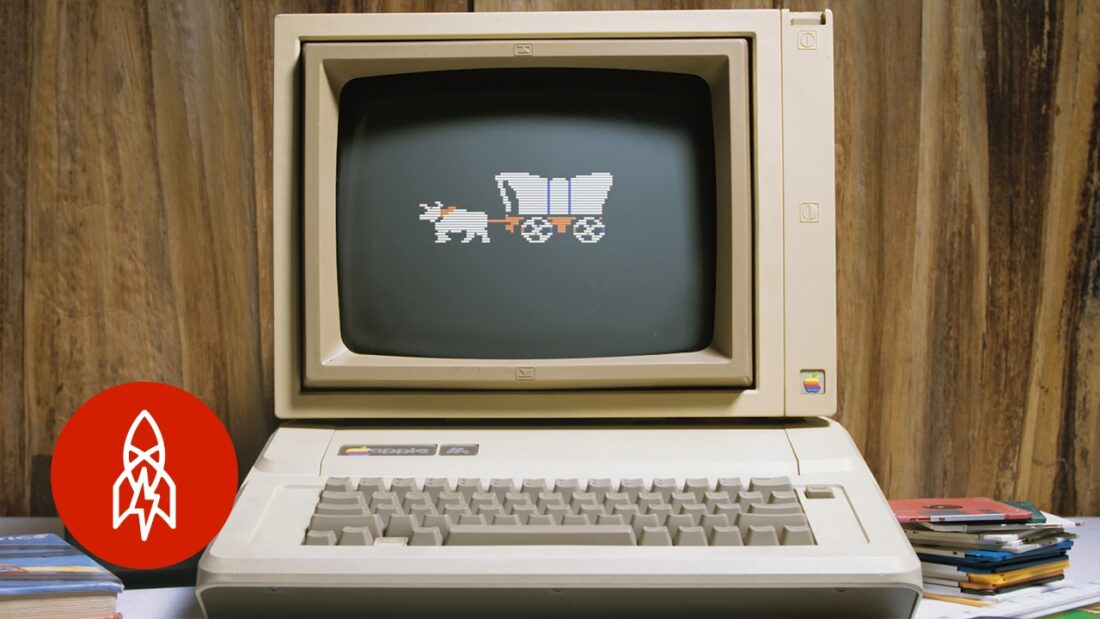
On a black 16-color VGA background, your job was to guide your wagon from Missouri to Oregon's Willamette Valley, braving the dangers of rattlesnake bites, dangerous river crossings, and attacks by hostile tribes.
The video game was such an immersive world. If you left too early in the year, flooding was a concern. Leave too late and your wagon could end up snowbound before ever reaching Fort Dalles. Along the way, children could learn about famous Oregon Trail stops and landmarks, as well as the ever-present dangers along the way. Many things could mean instant death, from broken bones and accidental gunshot wounds to perhaps the most memed of The Oregon Trail game deaths: DYSENTERY.
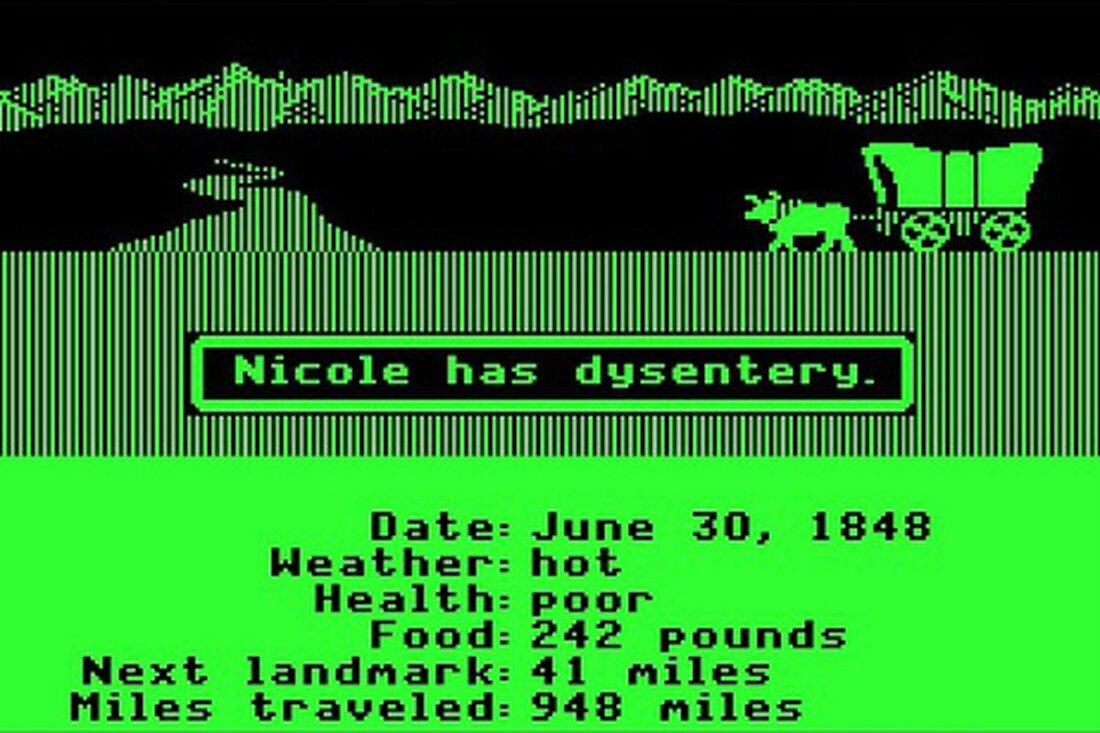
There were real-life concerns at play. Did you buy enough food to sustain your group through the perilous journey? Are you stocked up on medicine, bullets, and items to repair your wagon as it breaks down on the rough terrain? Likely you'd worry about your oxen too as food for your livestock was just as important as sustenance for your wagon party. Inventory management was key to survival, as were utilizing stops at various forts, campsites, and rest areas during the adventure. Taking one of your characters out to hunt was also a necessity to replenish food stocks for the success of the whole party.
What about the real Oregon Trail?
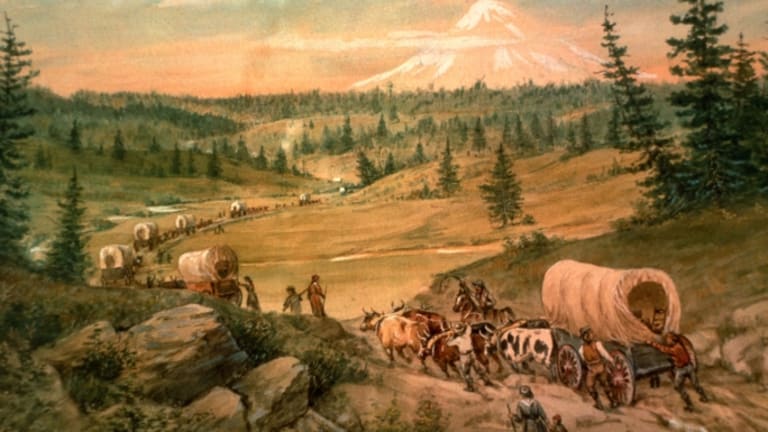
The Oregon Trail was a 2,170-mile (3,490 km) emigrant trail that connected the Missouri River to valleys in Oregon. This historic route was used by pioneers, fur traders, and trappers from 1811 to 1840, who made the treacherous journey to the Pacific Northwest on foot or horseback. The trail was first cleared for wagon travel in 1836, and by the time the first migrant wagon train of settlers was organized in Missouri, a trail had been cleared all the way to Fort Hall, Idaho. The wagon road was eventually cleared to the Willamette Valley in Oregon, and it became the main route for settlers traveling west.
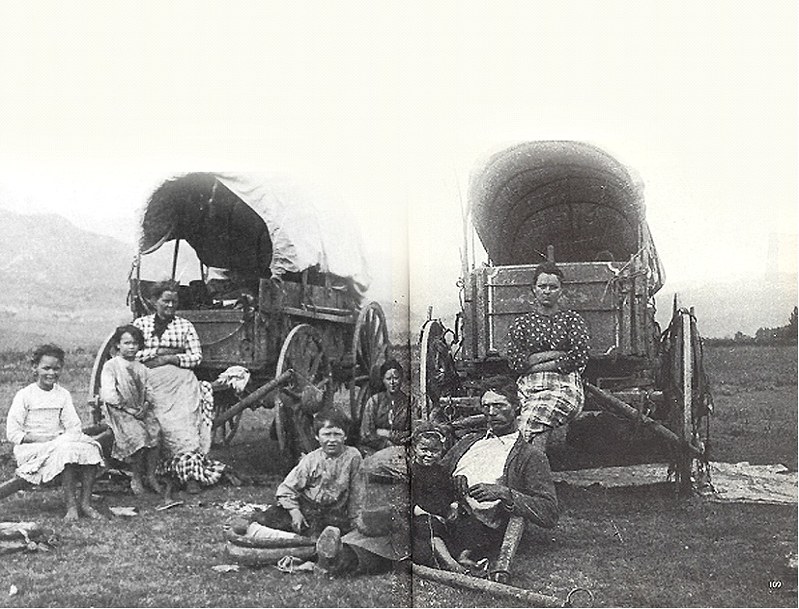
The Oregon Trail began in various places in Iowa, Missouri, or Nebraska Territory, but all routes converged along the lower Platte River Valley near Fort Kearny, Nebraska Territory. From there, settlers were led to fertile farmlands west of the Rocky Mountains.
About 400,000 people from the early used the trail to the mid-1830s, and its popularity only grew as more and more people sought to make a new life in the West. The trail was also used by travelers on the California Trail (and led to the gold rush), the Mormon Trail, and the Bozeman Trail before they reached their respective destinations with high hope for the future.
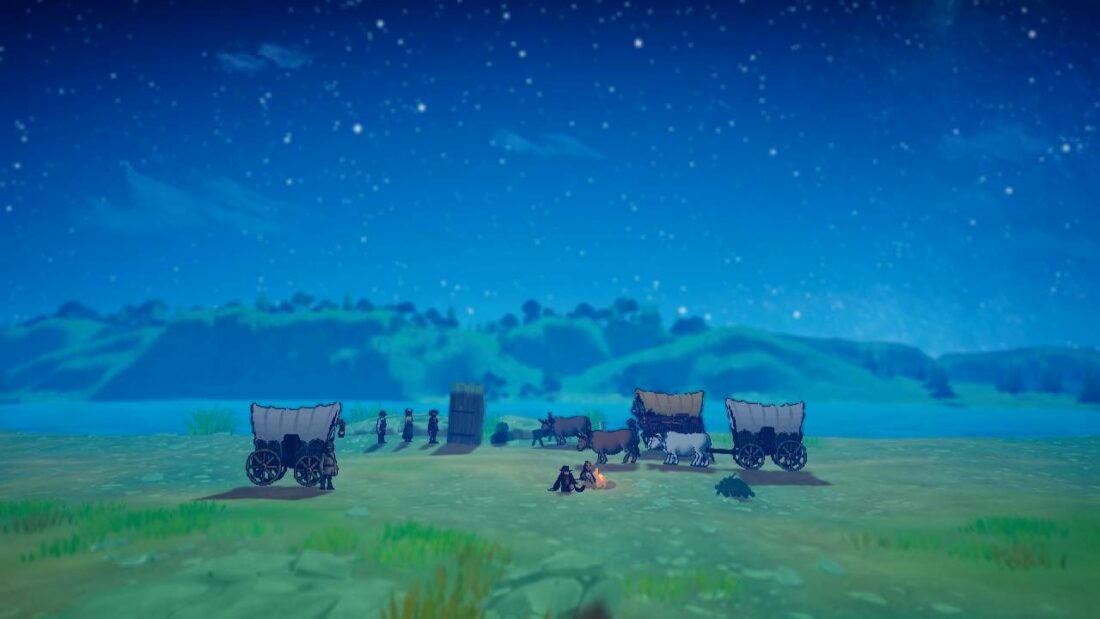
Early Americans believed in the concept of 'Manifest Destiny' or "the divinely ordained right of the United States to expand its borders to the Pacific Ocean and beyond." In order to expand borders to the Pacific Ocean, the US government offered up free land to those willing to travel to "Oregon Country".
The Oregon Donation Land Act initially offered up 320-acre parcels of land in 1843, though only to white male citizens. A woman could only claim 320 acres if she was married, meaning a married couple could claim a 640-acre parcel of land for their homestead. The law changed in 1850 to offer up half the land, so married couples could only claim 320 acres. Once a person had lived on and had success with the land for four years, they were given legal title to the property.
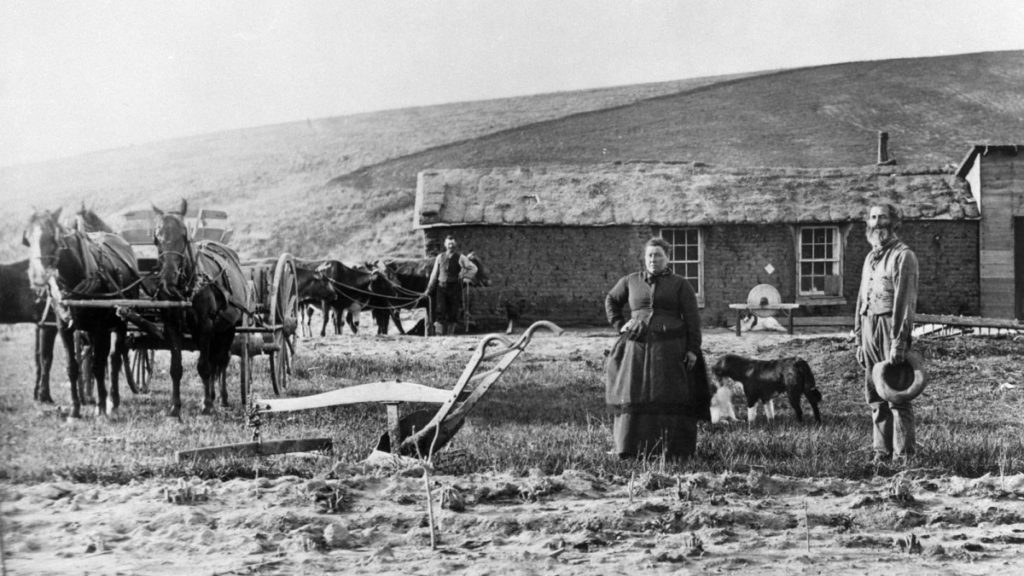
Pioneers sold everything they had in order to buy a wagon and supplies, left their homes and families behind, and set out west with groups of other pioneers for a trip that could take up to a year. Many people didn't survive the trip, and the Oregon trail was littered with dressers, pianos, and other furniture pioneers had to offload and leave behind because they couldn't be hauled uphill.
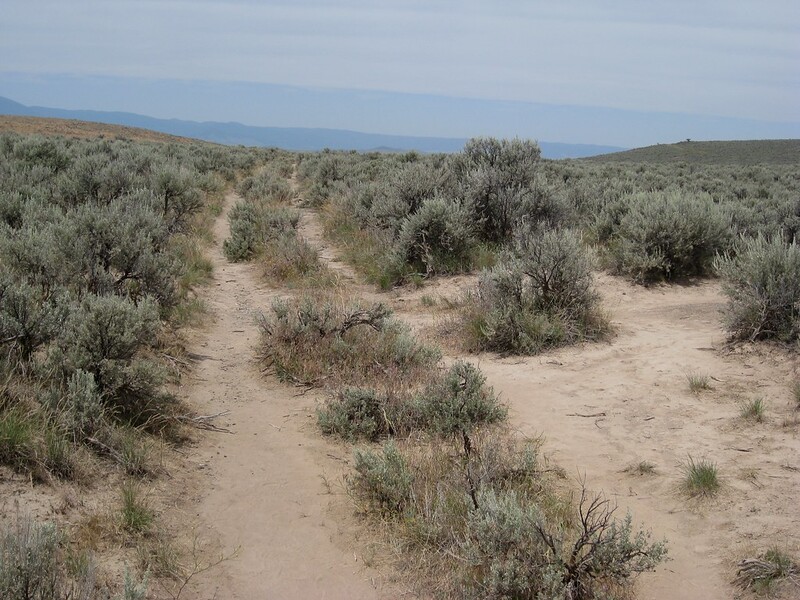
Despite the dangers and difficulties of the journey, the Oregon Trail was a popular choice for many settlers because it led to adventure, fertile farmland, and opportunities in the Pacific Northwest. The trail was improved over the years, with bridges, cutoffs, ferries, and roads added to make the journey faster and safer. However, the use of the Oregon Trail declined after the completion of the first transcontinental railroad in 1869, which made the old road outdated.
Today, the legacy of the Oregon Trail lives on, with modern highways such as Interstate 80 and Interstate 84 following parts of the same route and passing through towns established to serve those on the trail. The trail is remembered as a symbol of American expansion and as a testament to the determination and courage of those who made the journey. It remains an important part of American history and is studied by historians, archaeologists, and preservationists who work to preserve the trail and the stories of those who traveled it.
Learn more about the Oregon Trail and the Great Emigration of 1843 here.
You can also visit the National Oregon Trail Interpretive Center outside of Baker City, Oregon, or the End Of The Oregon Trail Interpretive Center in Oregon City, Oregon.
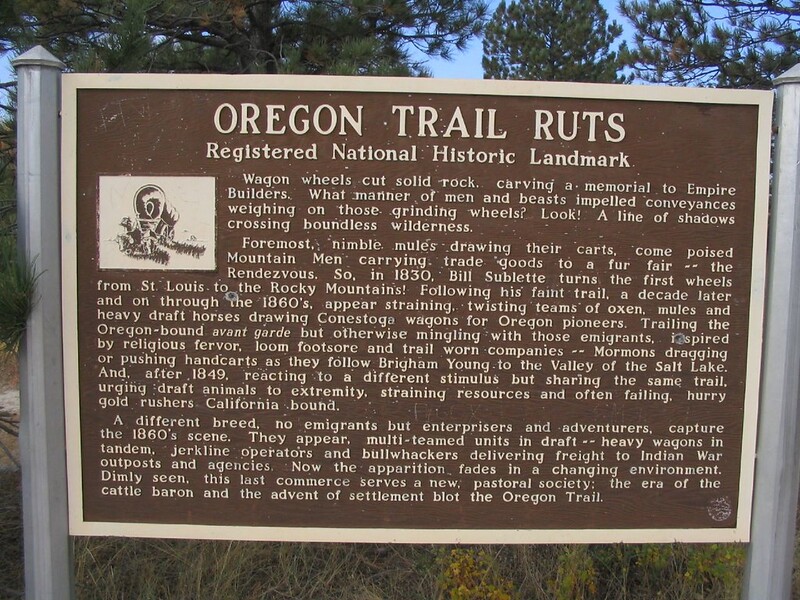
If you're interested in traveling the Oregon leg of the original trail, consider taking our Oregon Trail road trip this spring or summer. There are still many remnants and landmarks left behind today.
What Are All the Ways to Play The Oregon Trail Video Game?
Today you can play versions of the classic video game in four different ways:
- Via Online Emulator
- On Apple Arcade
- On the Nintendo Switch
- By playing the Oregon Trail Card Game
Can You Still Play The Oregon Trail Game on a Computer?
Why, yes you can! If you're feeling nostalgic (or maybe you've never even played before), click the emulator below to begin playing the Oregon Trail game online for free. Will you successfully guide your party to Oregon, or receive the classic message on your screen that you have died of dysentery?
The New Oregon Trail Game Online on Apple Arcade
There's a newer, updated version of the Oregon Trail game by Gameloft available to Apple users on Apple Arcade. Check out the trailer for the new game below:
Play The Oregon Trail on the Nintendo Switch
I was insanely excited when this new version of the video game was announced in 2021. While the classic game is still my jam, this modern handheld masterpiece really brings it all full circle. The Switch game manages to hold onto to aesthetic of the original graphics while updating them into a beautiful blend of nostalgia and color.
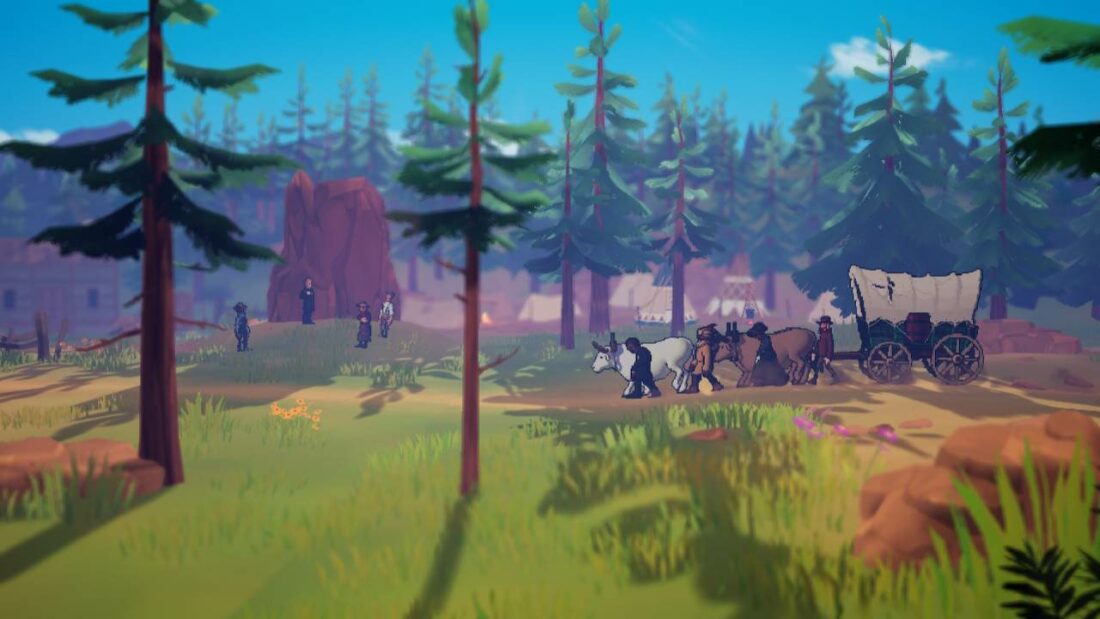
While the bones of the earlier versions are still very much embedded in the update, so many fun new features have been added to enhance the world of the trail. For the first time, Native American characters and the backstories of indigenous people are brought to life. New character categories with their own unique personalities make choosing your four-person party a little more daunting. Lots of folks on the trail are willing to trade goods with you, but is it a good deal or are they just looking to swindle your party? When supplies are running low, those are the life choices that can make or break your success in the wild west.
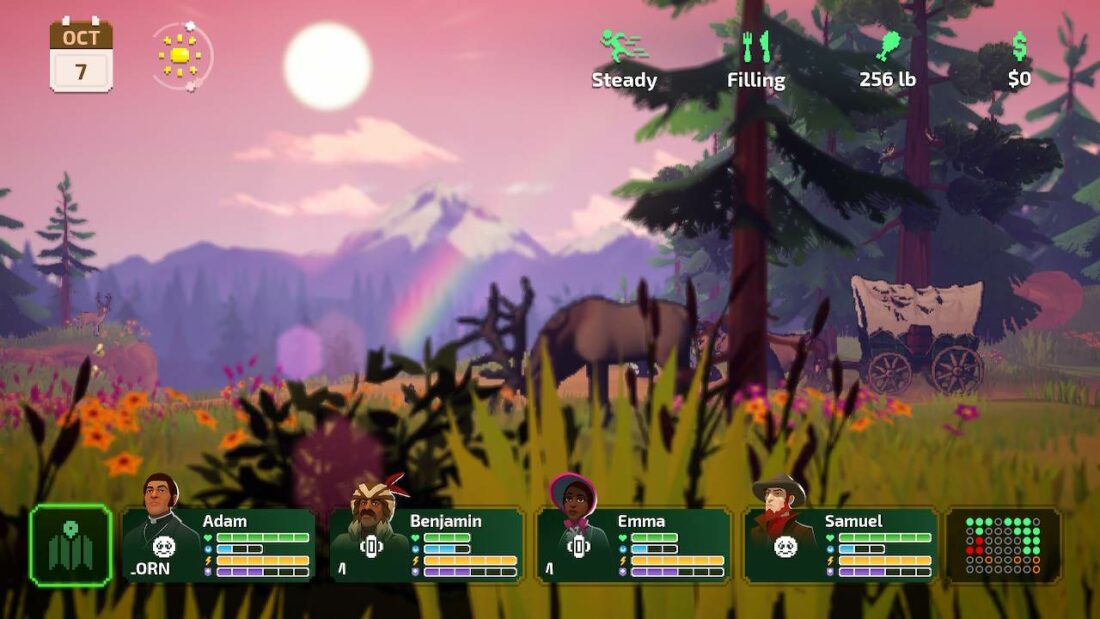
Once your party finally leaves Fort Hall they'll be met with fun side-quests, random events, mini-games, and new challenges. Should Emma approach that wild coyote blocking the trail? What will happen to Ava, the runaway woman hoping to marry her true love despite her father's wishes? Do you drink from the spring teeming with mosquito larvae or go thirsty? There are hundreds of different choices presented to the player; more than enough to make things fun and entertaining.
I was really enchanted by the Oregon section of the game following the party's stop at Fort Boise. On my first run-through, members of my wagon became frustrated, bickered, and in a foot-stomping display of emotion, left altogether. After the typical deaths due to cholera and getting run over by the wagon, Fred was alone in the wilderness. He pressed on after Fort Boise, fighting dysentery, only to succumb to a snakebite that finally took him out.
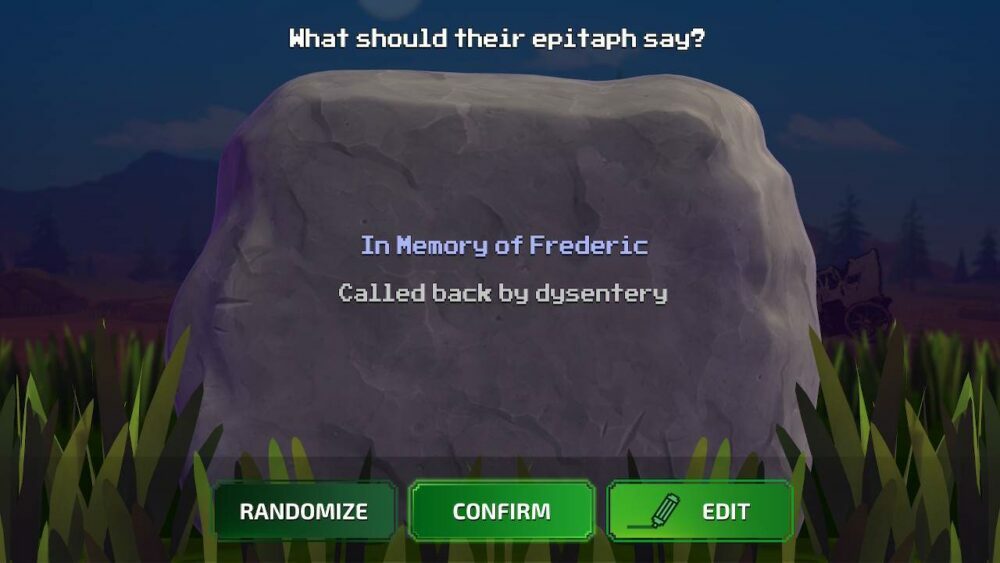
By my second trail party, I was quite a bit savvier, in the know about hunting, fishing, and what wild berries to leave alone. Nobody in my party died, although they finally rolled into Oregon City a bit worse for the wear.
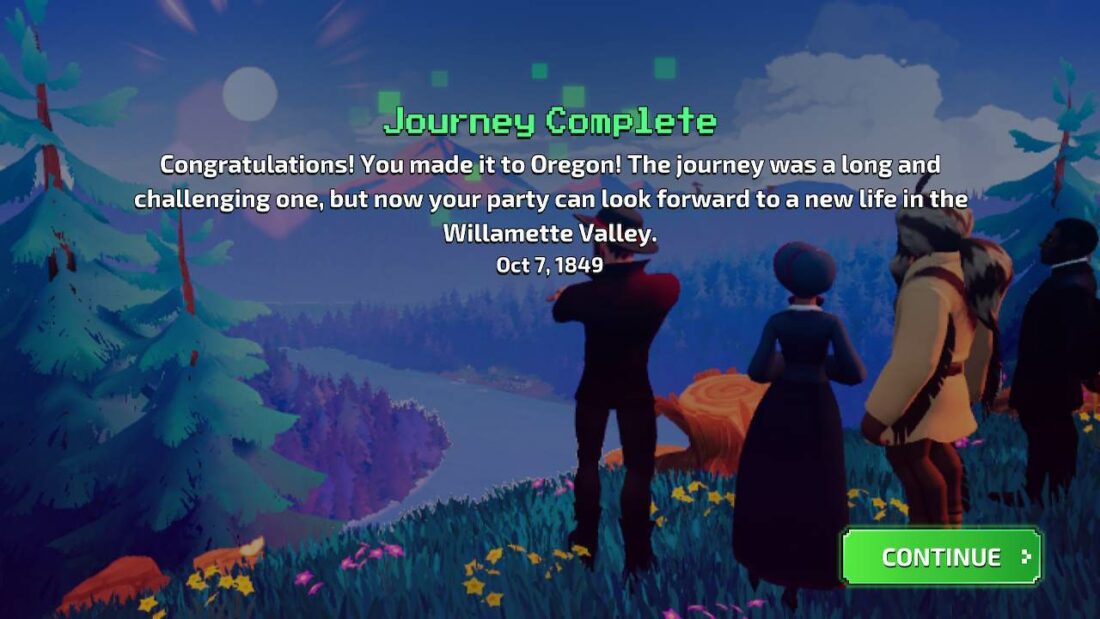
Another awesome new feature is the option to choose different trails and scenarios that real folks would have been faced with. You can leave the main road and pursue adventure in the gold rush on the California Trail, or try to survive a winter in the Blue Mountains. Online play for challenges with other worldwide friends or random players is another new feature that adds a whole new element of fun.
All the while, your characters are unlocking achievements, gaining XP points, meeting other settlers, spotting new wildlife, and keeping track of all the real-life events the game is based on. Most of the side stories are gleaned from the actual Oregon Trail journals written by real immigrants along their journeys, making the game an enjoyable history lesson for both adults and children alike.
The Oregon Trail Card Game
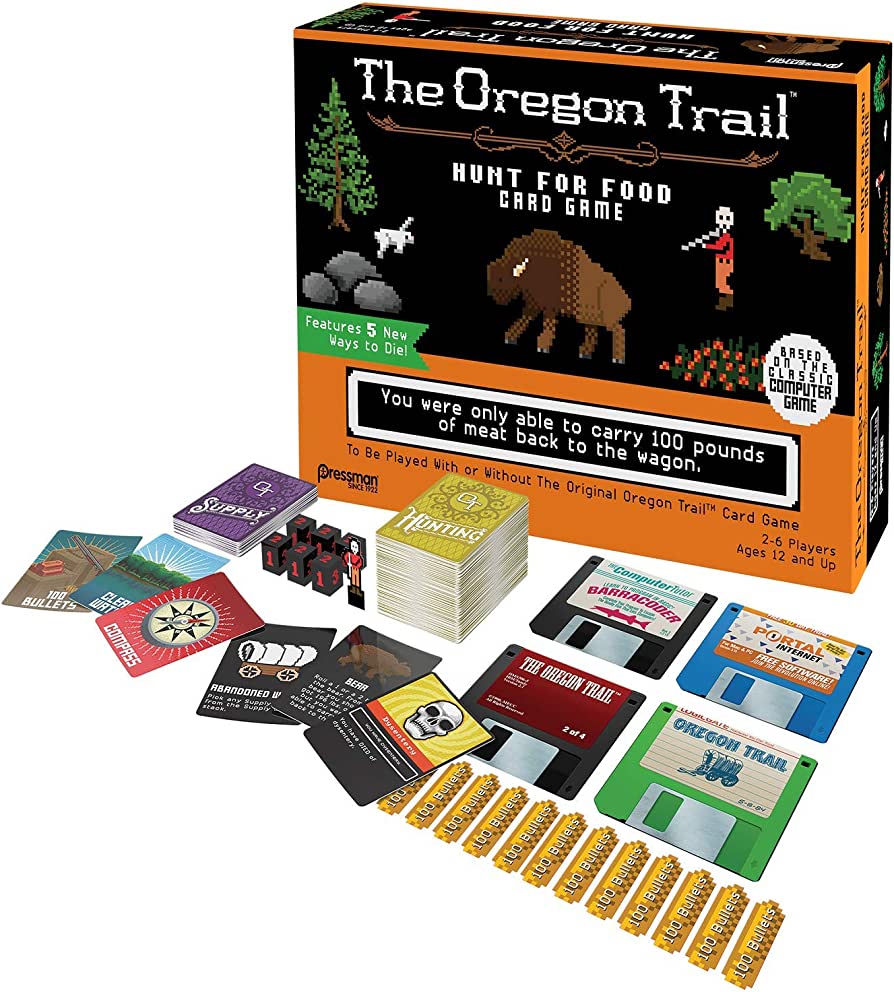
If you're not into playing this classic online but still want to play, there's a card game version of the Oregon Trail game you can try.
Check out the instructional video on how to play below to see if it's something you want to add to your board game collection for game night.
For those who want to explore the Oregon Trail in real life, visit here to check out this Awesome Oregon Trail Road Trip.

